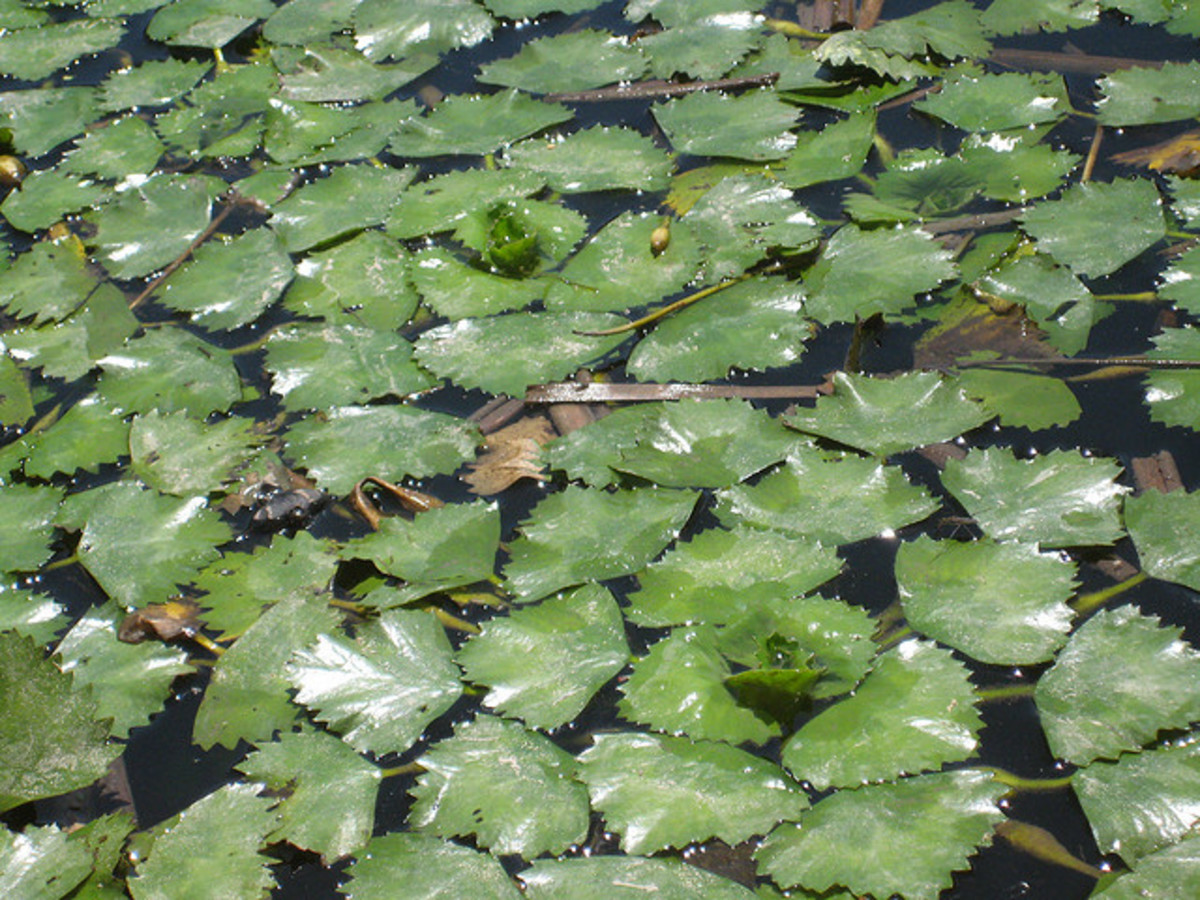
Health Benefits and Uses of Indian Water Chestnut (Singhara) CalorieBee
Known by its scientific name Eleocharis dulcis, the Chinese water chestnut is a grass-like plant that is native to certain areas in Asia, Australia and Africa — as well as several islands in the Pacific and Indian Oceans. Contrary to what its name suggests, it's not actually a nut at all.

WATER CHESTNUTS Sync with Nature
Water chestnuts grow at the "water's edge" and in grassy areas along the water, according to Serious Eats. The endearingly misshapen, nut-like product is firm when ripe, and its unappealing appearance belies its pale, sweet flesh. What do water chestnuts taste like? Shutterstock

What Are the Nutrition Facts And Health Benefits Of Water Chestnuts?
Can water chestnuts be used as a substitute for chestntuts?

How To Cook Water Chestnuts The Complete Guide Foods Guy
The plants need full sun and lots of water. The first thing you need to find is a container big enough to hold a sufficient amount of water. For a size guide, a 25-gallon container will hold roughly 30-35 mature water chestnut plants. You don't need a large container, though. A 5-gallon bucket will do.

What Is A Water Chestnut Information About Growing Water Chestnuts Water chestnut, Aquatic
The water chestnut is a plant that grows underwater in marshy and muddy areas. The small, round "corms" that are cut from the plant and eaten cooked or raw are actually the entire plant. Despite its name, the water chestnut is not a nut. Are chestnuts considered a nut
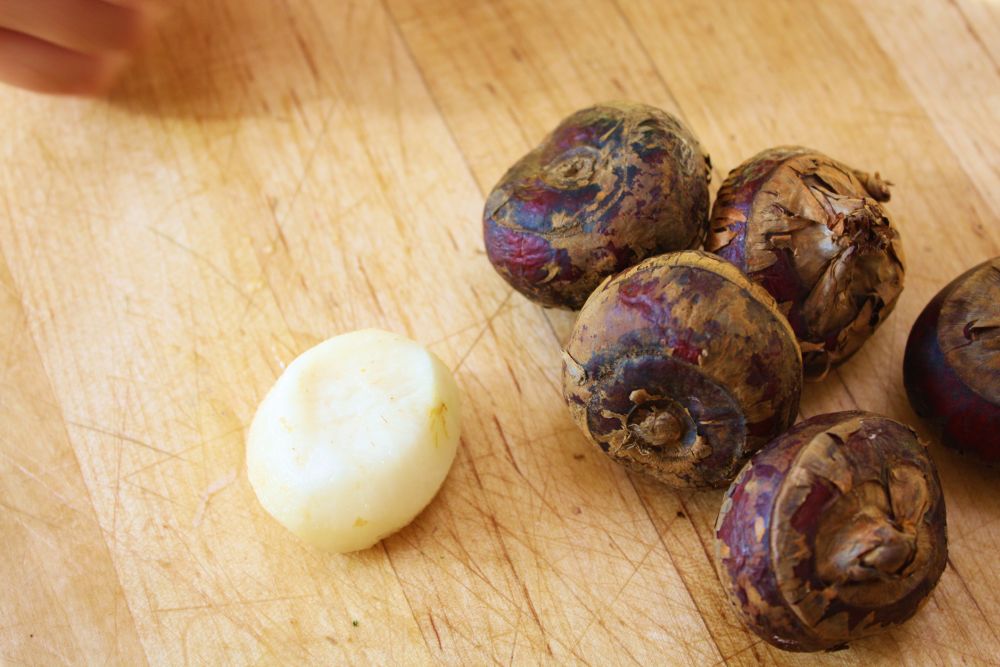
Water Chestnut Care How To Grow And Harvest Water Chestnuts
The name "water chestnut" comes from the fact that it resembles a chestnut in shape and coloring (it has papery brown skin over white flesh), but the water chestnut is actually not a nut at all—it is an aquatic tuber (rootlike part of a plant) that grows in freshwater marshes.

Water Chestnut Knowthys Live to Know!
Chestnuts are edible fruits that grow from trees belonging to the plant family of Fagaceae. The tree produces sweet nuts with high contents of vitamin C, fiber, magnesium, and potassium. These are seasonal foods that are typically available during the autumn and winter months. You can buy whole chestnuts in cans, jars, or fresh.

ARCHAEOLOGY OF FRUITS & VEGETABLES Water Chestnut Chef's Mandala
Water chestnuts are an aquatic tuber vegetable. They grow in parts of Southeast Asia, Africa, Australia, and many Pacific islands. A water chestnut resembles an actual chestnut in both.

Are Water Chestnuts Good For You? How To Eat Them?
Water chestnuts are a good source of fiber, potassium, and several healthful antioxidants. Water Chestnut Nutrition Facts The following nutrition information is provided by the USDA for 4 raw water chestnuts (36g). Calories: 35 Fat: 0g Sodium: 5mg Carbohydrates: 8.6g Fiber: 1.1g Sugars: 1.7g Protein: 0.5g

What Is A Water Chestnut Information About Growing Water Chestnuts
Eleocharis dulcis, the Chinese water chestnut or water chestnut, is a grass-like sedge native to Asia, tropical Africa, and Oceania. [3] It is grown in many countries for its edible corms. [4] The water chestnut is not a nut but rather an aquatic vegetable that grows in marshes, under water, or in mud.
:max_bytes(150000):strip_icc()/water-chestnuts-146276166-c145452beb5a4a51b6b99bfb16172afe.jpg)
What Are Water Chestnuts?
Water chestnut is not a nut at all, but an aquatic vegetable that grows in marshes, underwater, in the mud. Water chestnut is a small, round gladiola bulbs vegetable about 2-4 cm in diameter that has a thin brown skin and a crunchy, juicy, sweet and fragrant white flesh.
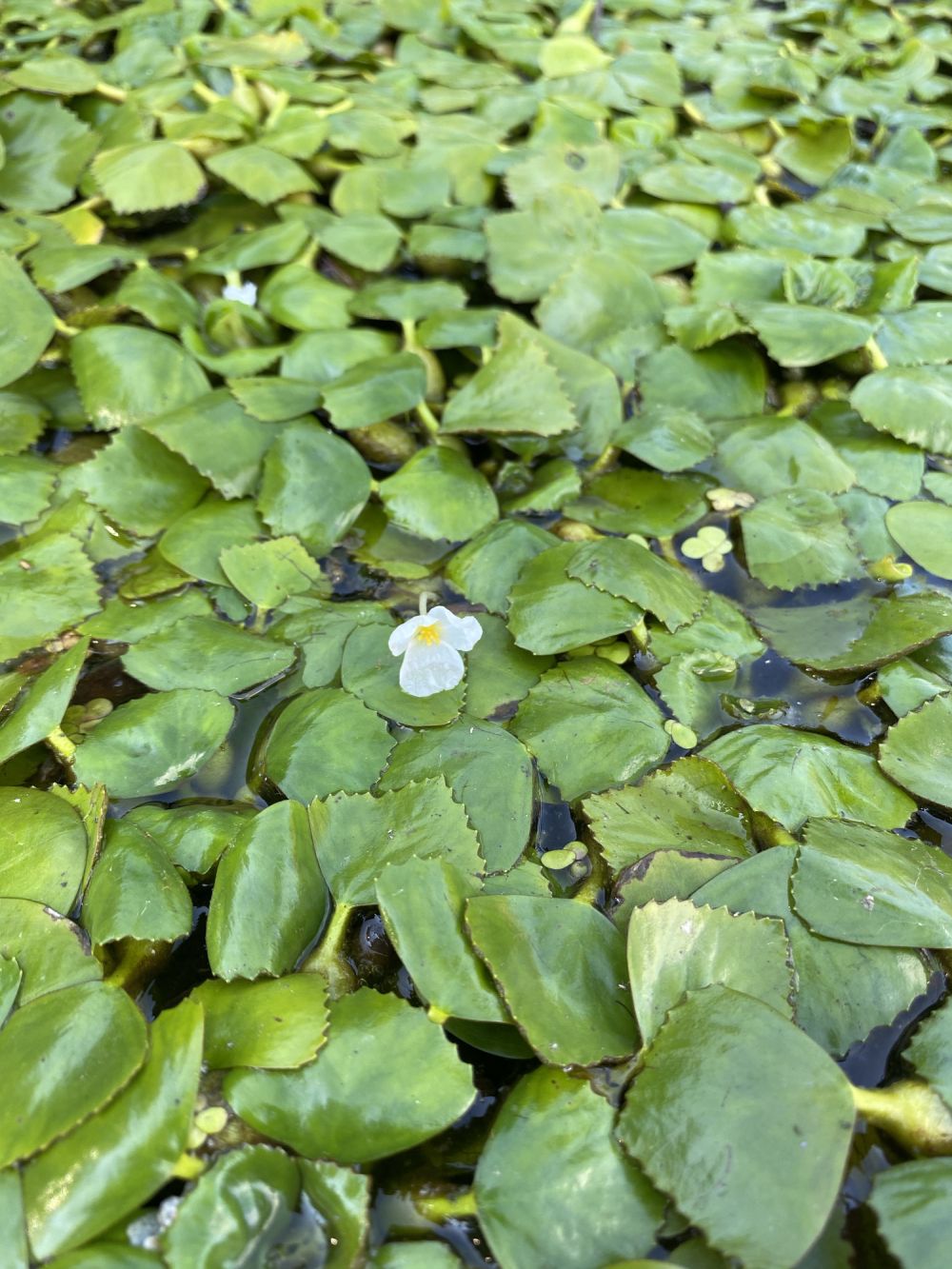
Water Chestnut Care How To Grow And Harvest Water Chestnuts
No, water chestnuts aren't "real nuts," and they're considered aquatic vegetables. However, the brown skins of the tuber are akin to tree chestnuts. Moreover, water chestnuts are incredibly sweet, nutty, and a bit tart with a texture of an Asian pear. Fresh vs. Canned Water Chestnuts
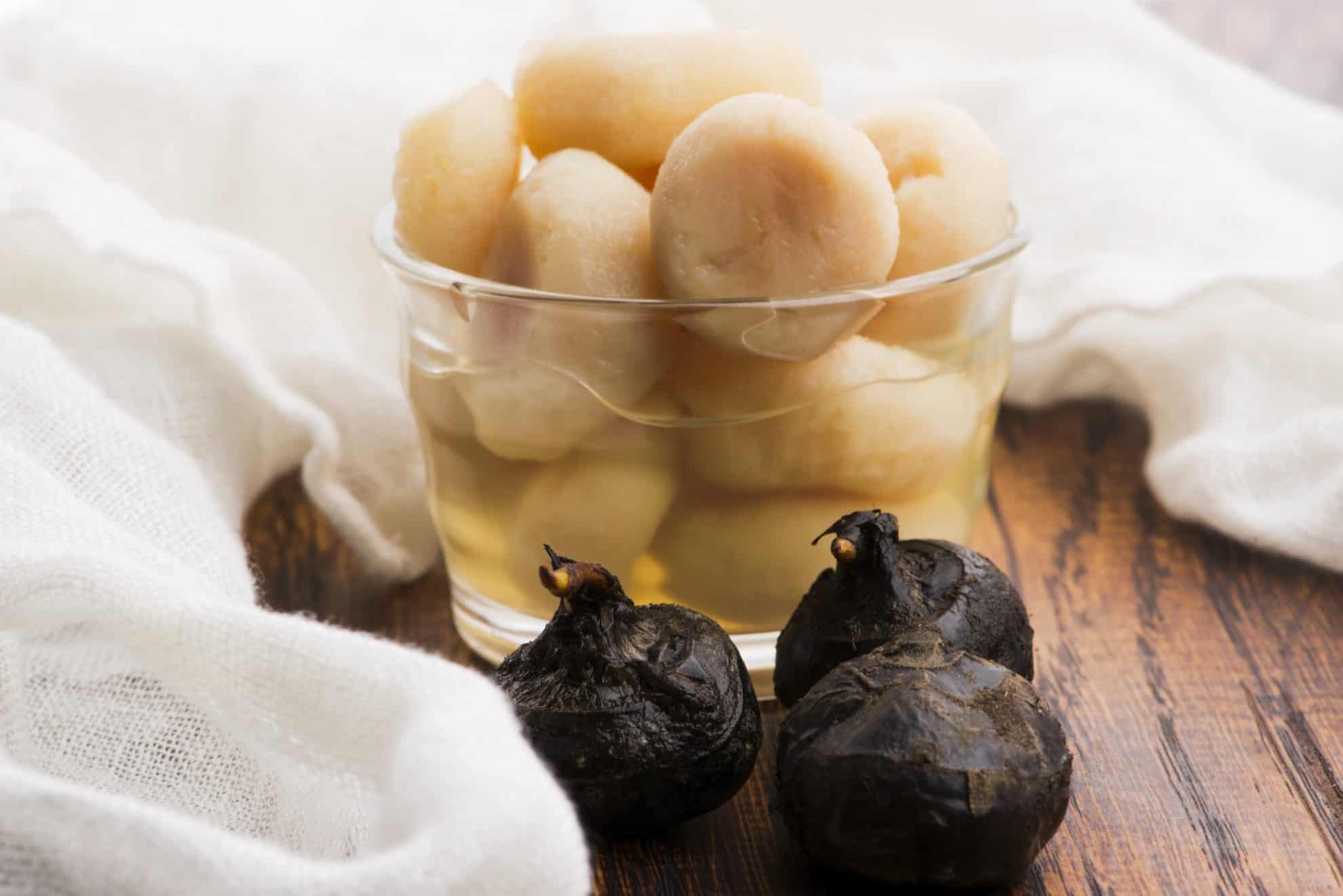
What are Water Chestnuts? BONUS Recipes that Use Water Chestnuts!
Firstly, water chestnuts are also known as Chinese water chestnuts and by their scientific name of 'Eleocharis dulcis'. Despite their name, water chestnuts are not similar to regular chestnuts in anything other than appearance, nor are they a type of nut.
/water-chestnut_annotated-b0dfb9ac616b4fc0b4d71267f89520ad.jpg)
Water Chestnuts Nutrition Facts and Health Benefits
The water chestnut, also known as the Chinese water chestnut, is not really a nut. It's an aquatic vegetable, often grown underwater in marshy and muddy areas. The grass-like plant is.

Whole Chinese Water Chestnut or Waternut on White Stock Photo Image of plant, chestnuts 62866888
Water chestnuts of the genus Trapa (family Trapaceae) are native to Europe, Asia, and Africa and are also known as water caltrops. The name water chestnut is commonly applied to their edible nutlike fruits.
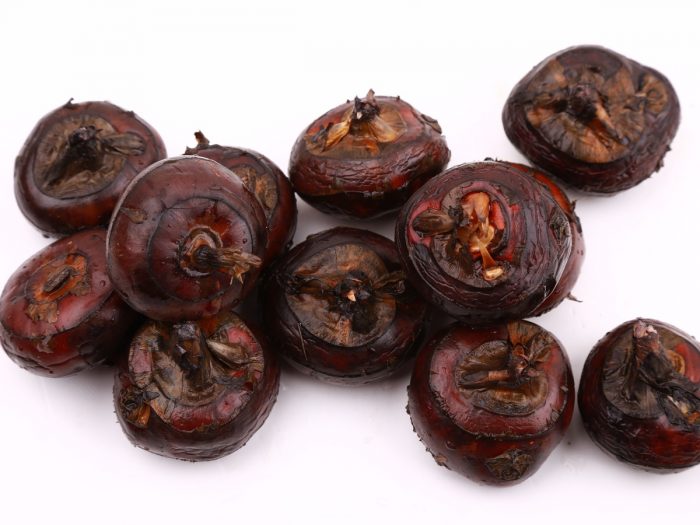
6 Wonderful Benefits of Water Chestnuts Organic Facts
Canned water chestnuts should be rinsed under cool, running water. To remove the "tinny" taste, soak the rinsed water chestnuts in fresh water with 1 teaspoon of baking soda for 10 minutes before slicing or chopping for various recipes. To peel fresh water chestnuts, slice off the top and the bottom and remove the skin with a vegetable peeler.